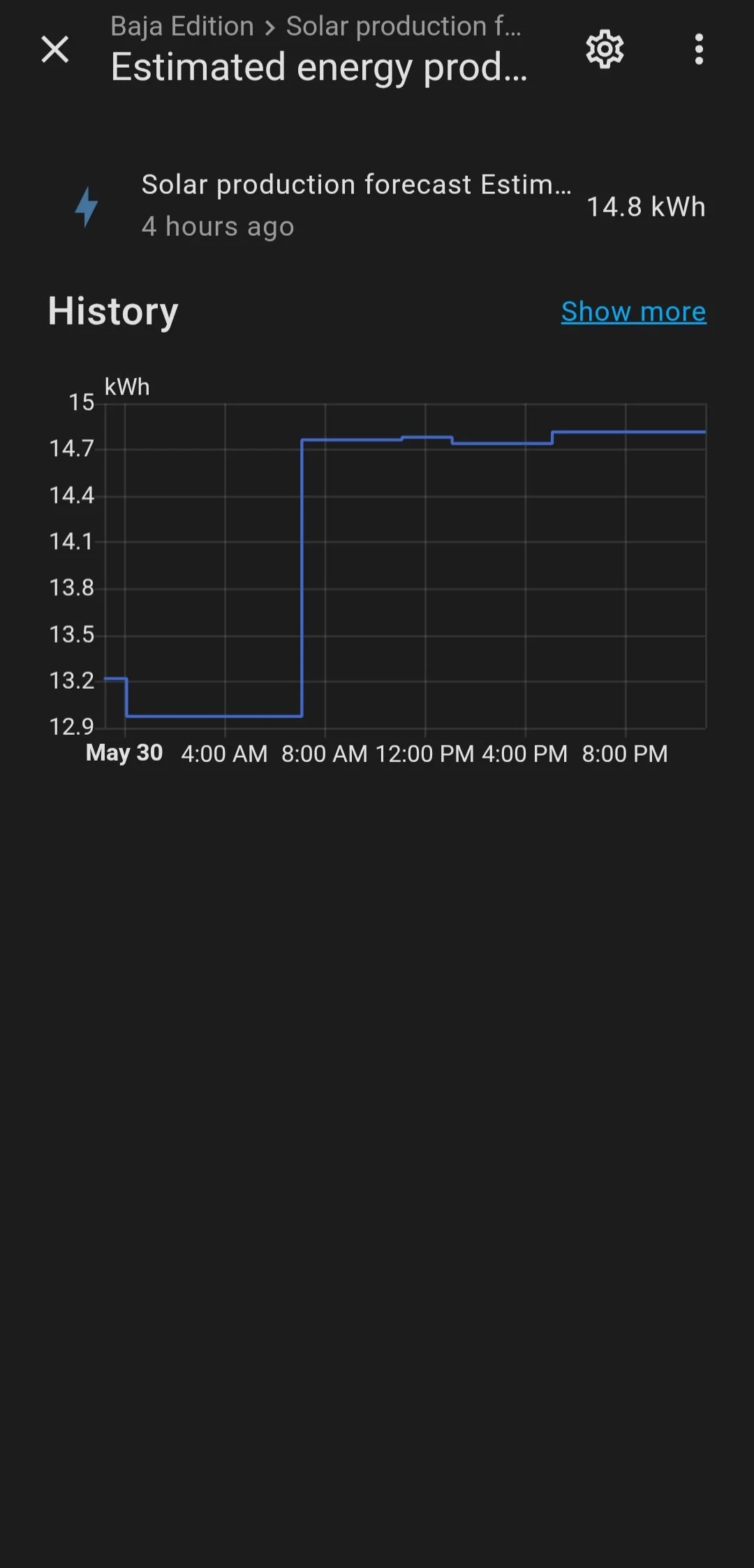Smarter Off-Grid Expeditions: How the RREV Baja Edition Predicts Your Solar Power Needs
The RREV Baja Edition is engineered for self-reliant exploration—built to go where roads end and power lines vanish. Whether you’re navigating remote trails or camping off the grid for days, smart energy management is key to pushing your boundaries safely and comfortably.
That’s why every Baja Edition comes equipped with an integrated solar forecasting engine that uses global solar radiation data and weather models to accurately predict your daily solar yield. With this data in your hands, you can plan your power use confidently and stay focused on the adventure—not your battery levels.
🔍 The Core of the Forecast: A Data-Driven Model
The Baja’s forecast engine combines two advanced data sources to estimate your solar production:
1. Historic Solar Irradiation from PVGIS
The Photovoltaic Geographical Information System (PVGIS) supplies long-term, satellite-derived solar radiation data for your precise location. It accounts for:
Your panel’s tilt and azimuth
Local sun angles and climate trends
Expected irradiance throughout the year
This data forms the base model of what your panels should produce under average conditions.
2. Live Weather Forecast Adjustments
On top of the historical model, the system applies short-term weather forecasts, including:
Cloud coverage (the most significant variable)
Ambient temperature (especially relevant when panels exceed 70 °C in summer heat)
Cloud cover reduces the amount of sunlight reaching your panels, while high panel temperatures can degrade efficiency by up to 15–20%.
⚙️ Calculation Model: What’s Happening Under the Hood
Each forecasted hour of energy production is calculated using:
Energy (Wh) = Irradiance from PVGIS × Cloud Cover Factor × Panel Area × Efficiency × Time (h)
Where:
Irradiance comes from PVGIS, already matched to your panel setup.
Cloud Cover Factor adjusts for forecasted sunlight reduction.
Temperature Derating reduces output during high heat.
These values are totaled into hour-by-hour and daily energy forecasts, measured in kilowatt-hours (kWh).
🌍 Global Forecasting with PVGIS 5.2
With the latest update to PVGIS 5.2, Forecast.Solar now covers nearly the entire globe—allowing accurate predictions almost anywhere you take the Baja. Whether you're posted up in Baja Sur, the Rockies, or Central America, you're backed by reliable, location-specific data.
📱 The RREV App: Your Expedition Energy Dashboard
Within the RREV app, you’ll get a clear, visual summary of:
📊 Forecasted solar energy (kWh/day)
🕒 Hourly breakdowns for strategic energy use
🔋 Projected battery levels based on usage and solar input
⚠️ Low-sun alerts to prepare for cloudy or stormy days
This allows you to time your high-draw devices—like Starlink, induction cooktops, or drone chargers—when production is peaking.
🛠 Expedition Example
You're camped off-grid in the Sierra de la Giganta for a week. The system shows:
Forecasted solar production tomorrow: 3.7 kWh
Your average usage: 3.0 kWh/day
You're good to go—charge everything, stay connected, even run the Air Conditioning through the night.
But a cold front moves in, and the forecast drops to 1.6 kWh. You get an alert, scale back usage, and run essentials only. Your batteries stay above threshold, and you avoid running dry—without guessing.
✅ Why Forecasting Powers True Freedom
Expeditions demand more than rugged tires and good maps—they require foresight. Solar forecasting gives you the power to:
Plan days ahead
Avoid energy shortages
Extend your range and stay out longer
In the RREV Baja Edition, your energy system doesn’t just collect sunlight—it predicts your energy future.
---




